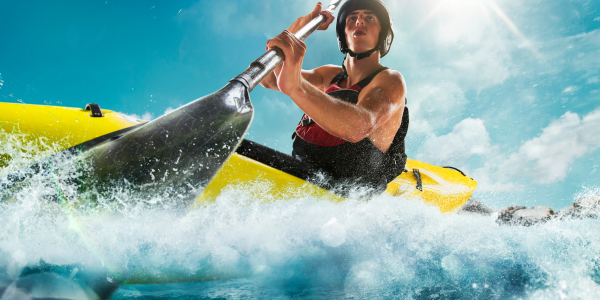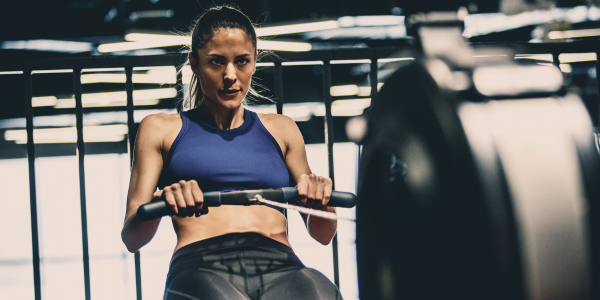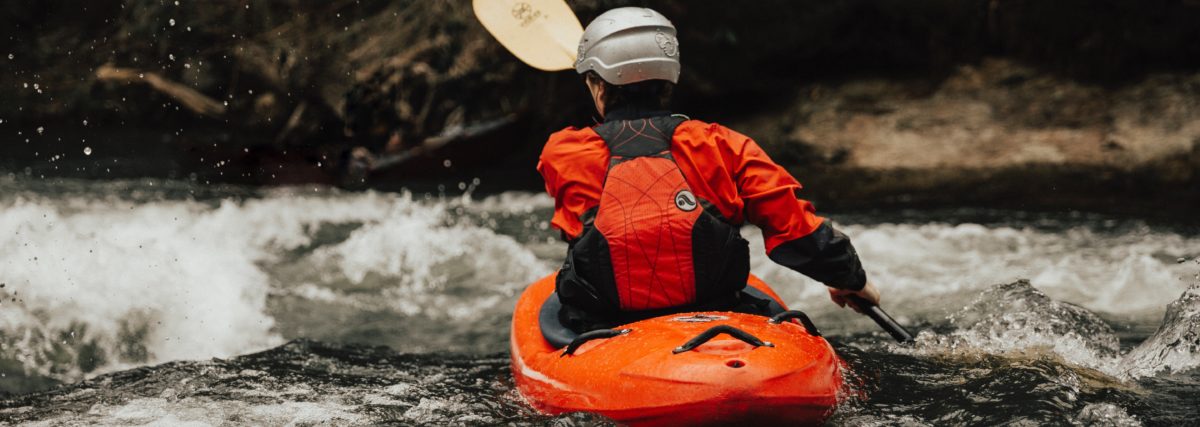Did you know that kayaking is one of the most intensive workouts for most of your body? Want to know what muscles get a workout when you paddle away on the lake or river? Keep reading this blog post to find out more about the ways that kayaking works your entire body – from your legs and arms, all the way up through core strength and balance.
In fact, the first time few times I ever kayaked, my whole body was so sore, it took 2-3 days to recover! It engages your core and is one of the best activities you can do for your health. Let’s jump into the breakdown below.
Understand The Full Range Of Motion That Kayaking Requires

Kayaking is more than just a leisurely activity on the water: it requires a full range of motion and physical exertion. For those who aren’t avid kayakers, prepare to be sore after the first time you engage in kayaking.
As you paddle through the waves, you’ll engage muscles in your arms, shoulders, chest, back, and core that you may not normally use. The continual movement of your upper body, combined with the push and pull of the paddle, creates a rhythmic motion that challenges your endurance and improves your overall fitness.
Additionally, maintaining good posture and balance in the kayak requires a strong sense of proprioception (proprioception is the perception or awareness of the position and movement of the body).
All of these factors come together to make kayaking a dynamic and exciting way to stay active and explore the great outdoors.
Learn Which Muscles Are Used To Paddle Your Kayak
When you’re paddling, it’s important to know which muscles are powering your movements to maximize your efficiency and minimize the risk of injury.
The major muscle groups used in kayaking are your back, shoulders, arms, and core.
The back muscles, especially the latissimus dorsi, are responsible for pulling the paddle through the water. Meanwhile, the shoulders and arms are working to control the paddle and maintain stability, and the core muscles provide foundational support and help transfer power from your upper body to your lower body.
Discuss How A Proper Posture Can Help You Maintain Balance While Kayaking
Kayaking is a physically extremely demanding activity.
One factor that can affect your performance is your posture. When paddling, proper posture is key to maintaining balance and stability on your kayak.
Keeping your shoulders back, chest out, and your weight evenly distributed on both sides of the kayak can help you cut through the water without tipping over.
Also, it’s important to keep your head up and look ahead; it helps maintain your balance and allows you to react quickly to changes in the water. With the right posture, you’ll build up your core muscles and improve your overall fitness.
Learning to Engage Core Muscles To Help Power Your Kayak Stroke

To make the most out of your kayaking expedition, it is essential to engage and strengthen your core muscles.
Your core muscle group which includes your abs, lower back, and obliques, plays a significant role in helping to power your kayak stroke. When kayaking, your core muscles not only help to stabilize your body, but they also help to generate the power needed to propel your kayak forward.
Engaging your core muscles while kayaking will ensure that you are paddling efficiently, conserving energy, and reducing your risk of injury.
So, whether you are a beginner or an experienced paddler, remember to engage your core muscles to make the most out of your kayaking experience.
Identify Which Muscles Are Engaged When Turning Your Kayak
If you’ve ever wondered which muscles are engaged when turning your kayak, I’ve got you.
The primary muscles used for kayak turning are the obliques and external rotators of the hips. These muscles work together to rotate the upper body while keeping the lower body stable.
Lastly, the back muscles and shoulders are used to provide the pulling motion needed to turn the kayak.
Explore Strengthening Exercises Before Taking Your Kayak Out On The Water

I can’t stress it enough: if you want to become a decent kayaker and enjoy it (and not always be sore), it’s a good idea to strengthen your muscles and improve your balance before taking your kayak out on the open water to maximize your potential and reduce the risk of injury.
There are various strengthening exercises that you can do to improve your overall performance, such as lunges, squats, planks, and balance exercises.
These exercises include:
- Planks – These will help strengthen your core over time.
- Squats – This exercises develops core strength and stability because it engages core muscles as well as the muscles that support the hip.
- Kettlebell Swings – This motion requires all the large muscle groups in your body including core muscles, glutes, thighs, and hamstrings while also increasing your heart rate and gives you a great workout.
Here are a few more you can do:
Conclusion
After reading this article, you should be better prepared and informed when it comes to kayaking. You understand the wide range of motions involved which rely on multiple muscles in your body, from shoulder muscles down to your core. And you now have a sense of the importance of having good posture when you’re out on the water.
Make sure to do the exercises above so you can enjoy your kayaking experiences more!
